Madresfield Court: A Worcestershire garden where new and old combine in perfect harmony
Steven Desmond visits Madresfield Court in Worcestershire, where high Victorian romanticism has been blended with modern ideas to create a remarkable garden.

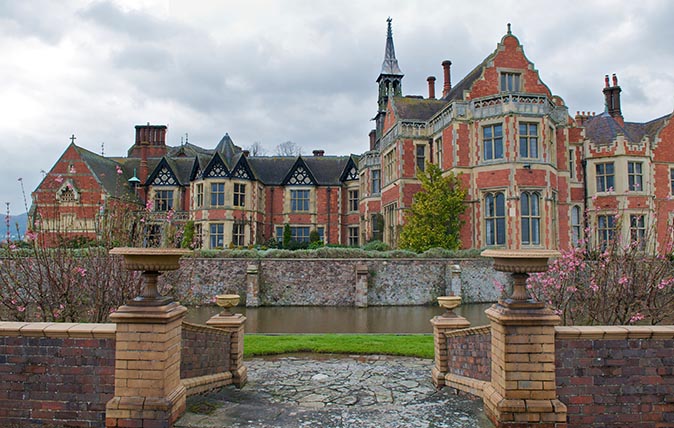
Madresfield Court is an improbable place: a house, garden and estate straight from the pages of a Disraeli novel.
It’s an ancient seat, lived in by the same family for the past 900 years, but received a comprehensive makeover during the 1860s, with many delicious aftershocks of decoration since that time. It would come as no surprise to catch a whiff of cigar smoke and hear the click of the croquet mallet in such a place.
The architect hired to cloak the ancient fabric in its new magnificence was Philip Hardwick, who began his work here in 1865. He was an unlikely choice, best known for his railway stations, including the famous and lamented Euston Arch. Here, he willingly played the theatrical romantic, investing the whole house with a mixture of Walter Scott-like embroidered history and a series of wonderful set-pieces, including a great hall complete with sensational timbered roof and minstrels’ gallery.
The grounds were subject to a parallel campaign of comprehensive improvement. William Cox, one of the premier head gardeners of Victorian England, took charge of a range of new features, each on a grand scale. His successor, William Crump — who arrived in 1883, having previously been at Blenheim Palace among other places — continued the work.
Great avenues pushed out from the house towards the lodges, including one of cedars of Lebanon, now magnificently over-mature, with great fans of foliage sweeping to the ground. In just such a setting, the weekend guests in Disraeli’s Lothair were treated to a picnic of lobster sandwiches washed down with Chablis.

Nearby, in a quiet dell, is a Pulhamite rock garden. The rocks themselves are made of an artificial material, essentially cement smeared over a core of brickbats and clinker. The result should be appalling, but is always, as here, entirely convincing, so that a detailed search always has to be made to find a corner of brick protruding in an obscure location.
As in so many of these fascinating creations, there is a fernery pool and a great primitive arch, featuring, in this instance, a nicely balanced rock overhead to add a frisson of agreeable terror. The mighty royal fern, Osmunda regalis, a native species that bears its spores in flower-like tufts held aloft, rather than on the backs of the fronds in the conventional way, looms over the pool. Although we’re only yards from civilisation, this is clearly the entrance to a lost world in which Prof Challenger might stumble upon a sleeping iguanodon.
Exquisite houses, the beauty of Nature, and how to get the most from your life, straight to your inbox.
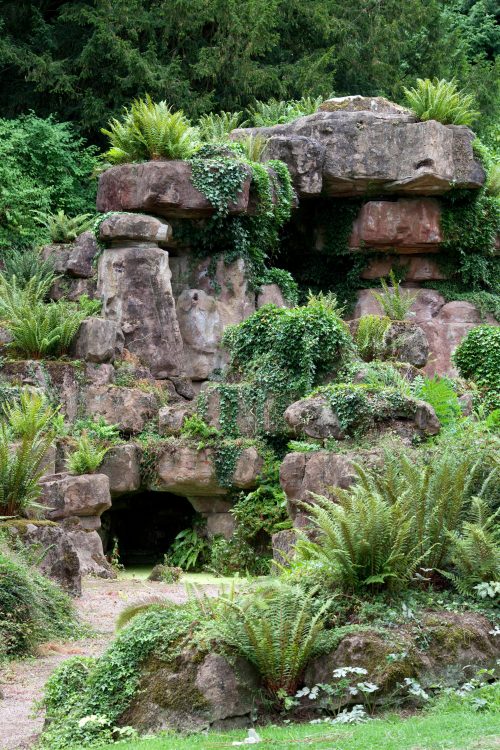
The house itself is set, as we might expect, within an ancient moat. It confers a desirable atmosphere of mystery on the house, with wings, gables and turrets pushing out in unexpected directions, just as one would wish of a place the origins and evolution of which are lost in the mists of antiquity.
Immediately outside the moat, the leading Edwardian garden designer Thomas Mawson laid out a garden of elaborate yew buttresses framing panels of seasonal bedding.
These latter are replaced, at least for now, by turf, but the yew structures remain, vast and complex, like a sort of giant showroom of antique topiary. The present head gardener, Andrew Tawse, spends much of his year shaving and shaping these and the many other stretches of hedge and arbour in the grounds.
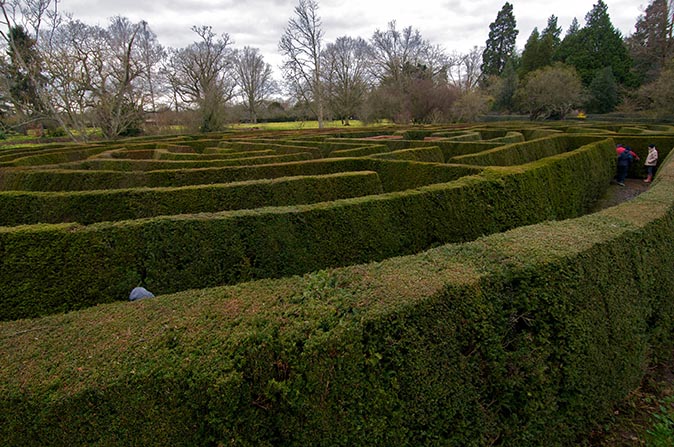
Looking in from all this complexity across the moat, a garden on a modest scale can be seen enfolded within the various wings of the house. This enclosed space, quite isolated from the rest of the garden and only approachable from the various rooms that give onto it, was a courtyard planted with lavender when the present generation of the family, Jonathan and Lucy Chenevix-Trench, moved here in 2012.
Working with Lucy’s mother, Rosalind Morrison, they wanted to emphasise its special significance as part of the elaborate layout and decoration of the house and called in Tom Stuart-Smith to advise on its transformation into something richer and more theatrical.
This is always a tricky brief in such a context, obliging the designer to steer a delicate course between the twin dangers of feeble pastiche and intrusive modernity, but Mr Stuart-Smith has been wise and skilled here.
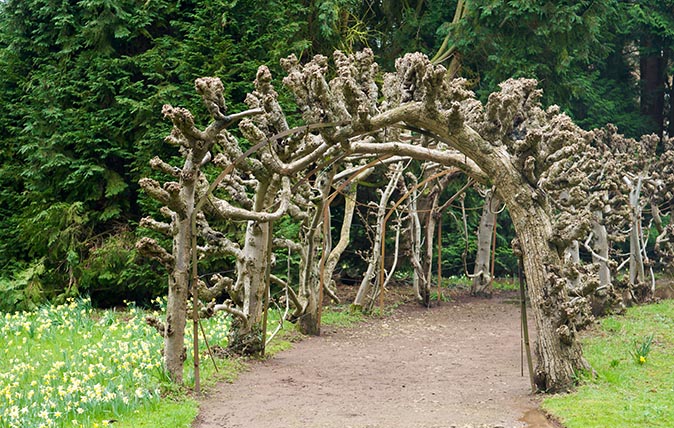
The whole scheme, within a confined and awkwardly shaped space, is grouped around the marvellous wrought-ironwork of a wellhead dated 1897. This ingenious feature has all the character of a medieval Gothic finial, though none of the detail is actually Gothic.
It forms an irresistible focal point, with the additional charm of allowing the house, the moat and the distant coverts of the immense park to be seen through it. The decoration incorporates the family motto, Fortuna mea in bello campo, which, like so many of its kind, can be variously interpreted.
Mr Stuart-Smith has cleverly framed this wellhead in a broad, green, level lawn with complex edge revealed from upstairs windows as the outline of a Tudor rose. Surrounding this elegant and thoughtful open space is a series of large-scale fleurs-de-lys in box, the outer curls planted with shrub roses. The whole pattern evokes just that Victorian sense of longing for the imaginary golden age of their ancestors.

The detailed planting of the garden is an interesting mixture of big, stocky shrub roses and modern herbaceous planting of the kind we have come to expect. The roses are a mixture of golden oldies, such as the vigorous, peony-like deep-pink double Wild Edric or the changeable hues of the floppy single Rosa mutabilis and the modern productions of David Austin.
Among the latter are the richly cerise double Munstead Wood (handsomely enfolded in the curves of the fleurs-de-lys) and the towering, single-flowered white Kew Gardens. Other shrubs giving substance to the mix include Hydrangea quercifolia, an outstanding plant offering form and colour across a long season. It looks very happy here.
The herbaceous planting is rich and varied and rewards examination. A bold modern note is struck by the inclusion of big tufts of Stipa gigantea, which looks quite at home here and removes any doubt that this is a new planting scheme.
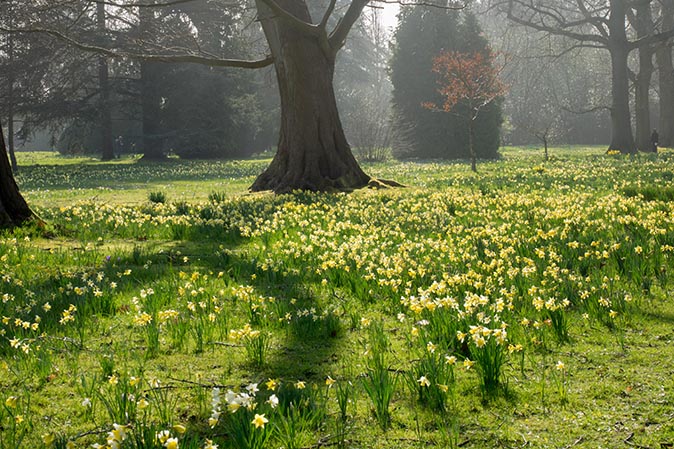
A restrained scheme of pale primary colours draws the eye this way and that: Salvia and Eryngium, red and blue, are cleverly underpinned by a sort of low cloud of misty blue formed by Perovskia, a selection of cranesbills and the combined forces of Stachys lanata and Crambe maritima, the native seakale, its lovely sea-green leaves stretching elegantly out across the gravel as if it were on one of its preferred shingle beaches.
The wonderfully crinkled white flowers of the Californian tree poppy Romneya coulteri shoot up here and there. Magnificent though it is, I’m always a little concerned as to where it might poke up next and frankly prefer to enjoy it in other people’s gardens.
The mixture is varied at the base of the house walls by big drifts of low evergreens including hellebores and the native Blechnum spicant, a neat ground-cover fern found in acid oakwoods in the wild. Spreading up the walls, adorning the ancient fabric, are several shrubs, the most evocative of which is the grapevine bearing the name Madresfield Court.
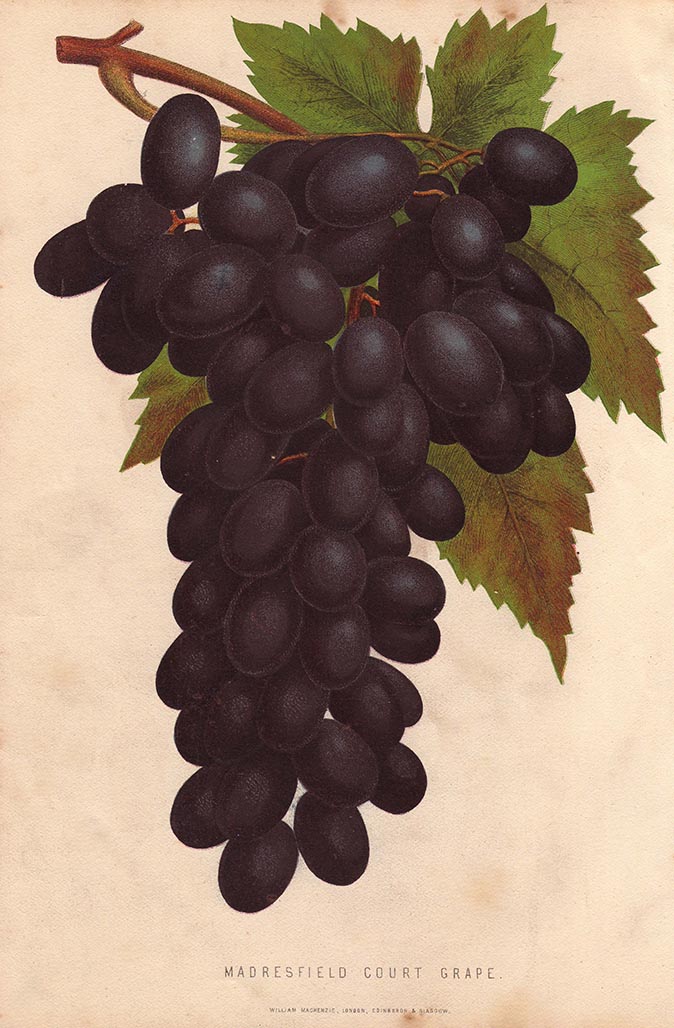
This black muscat was bred here by our old friend William Cox. It proved an immediate and lasting success and was awarded the desired First Class Certificate by the RHS in 1868. Its reputation is as good now as it was then and it was an inspired choice to drape these handsome walls with its noble leaves and fruits.
Beneath the crowd of gables, finials and coats of arms, this new garden confirms that new and old can come together in perfect harmony. It is a model of its kind.
Madresfield Court, Madresfield, Malvern, Worcestershire – www.madresfieldestate.co.uk
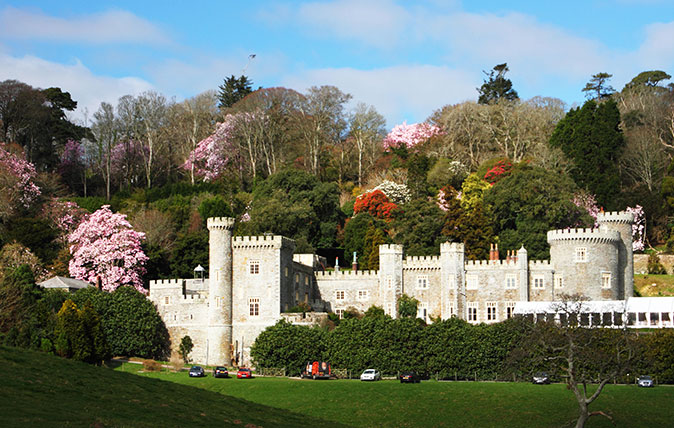
Credit: Alamy
The 19th century plant hunters who helped make Caerhays Castle's incredible collection
The magnificent gardens at Caerhays Castle in Cornwall are every inch the equal of the building which dominates the landscape,
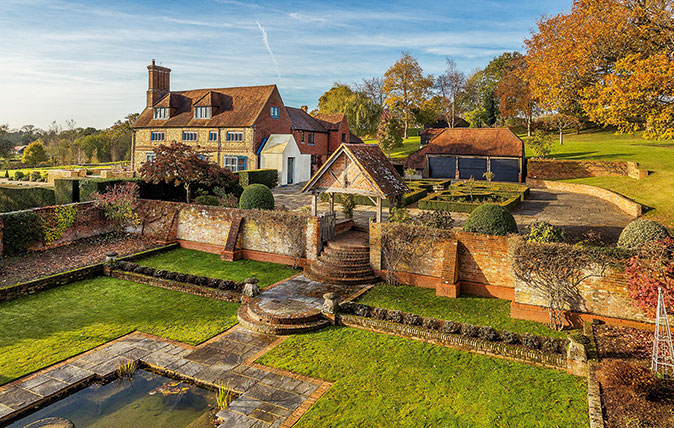
Credit: Old Pickhurst at Chiddingfold - Knight Frank
The sprawling country house in Surrey hailed as 'the best of the best'
Historical features, magical gardens and magnificently comfortable and liveable.
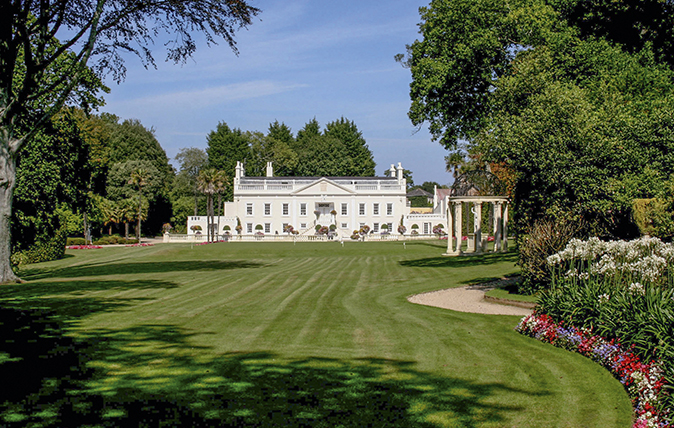
The magnificent estate with its own stunning Japanese water garden
Historic St John’s Manor on the north coast of Jersey boasts magnificent landscaped gardens and grounds, with beautiful serpentine, a

The first brick-built house in Shropshire comes to the market
Grade I-listed Plaish Hall is a magnificent Tudor country house standing in formal gardens.
Country Life is unlike any other magazine: the only glossy weekly on the newsstand and the only magazine that has been guest-edited by His Majesty The King not once, but twice. It is a celebration of modern rural life and all its diverse joys and pleasures — that was first published in Queen Victoria's Diamond Jubilee year. Our eclectic mixture of witty and informative content — from the most up-to-date property news and commentary and a coveted glimpse inside some of the UK's best houses and gardens, to gardening, the arts and interior design, written by experts in their field — still cannot be found in print or online, anywhere else.
